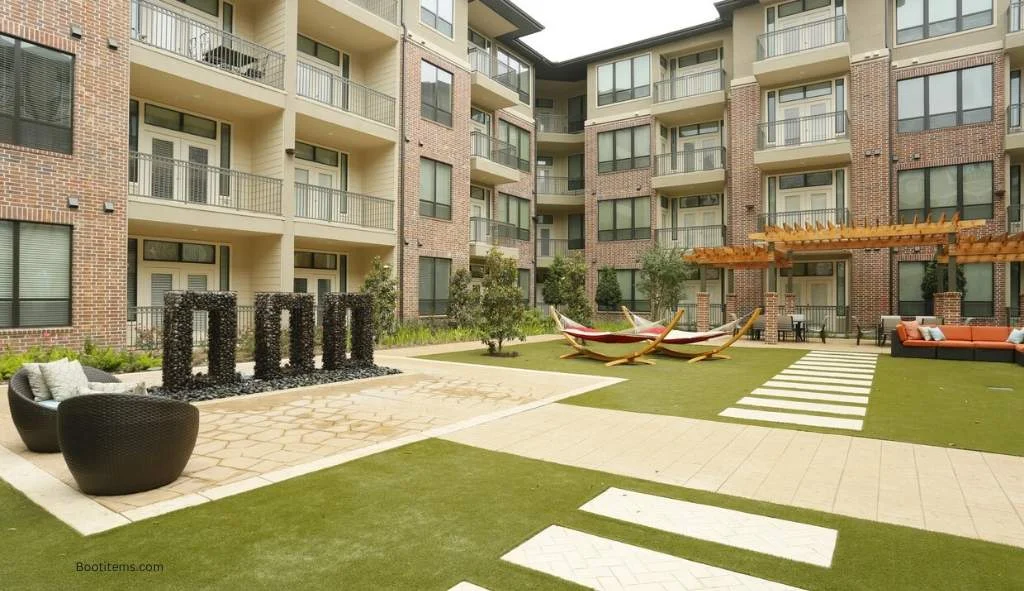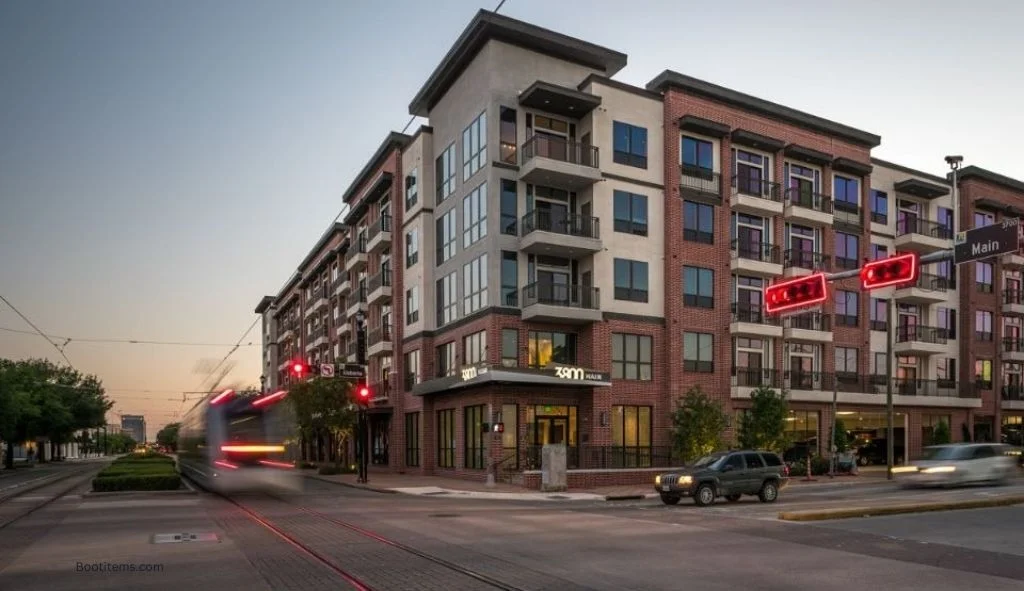Essential Housing Houston: Affordable Options for Workers
Essential housing in Houston provides affordable living options for moderate to middle-income essential workers like teachers, nurses, and first responders, enabling them to live near their workplaces with reduced rental rates.
What is Essential Housing in Houston?
Essential housing in Houston refers to residential units specifically designed to be affordable for moderate to middle-income individuals and families who provide critical services to the community. These housing options are particularly targeted toward essential workers such as teachers, nurses, first responders, law enforcement officials, retail and restaurant industry workers, and other critical workforce members who might otherwise struggle to find affordable housing near their places of employment.
The concept of essential housing addresses a significant gap in the housing market often referred to as the “missing middle” – those residents who earn too much to qualify for traditional low-income housing assistance but not enough to comfortably afford market-rate housing in desirable areas of the city. By providing these housing options, Houston aims to ensure that essential workers can live in the communities they serve, avoid lengthy commutes, and maintain a better work-life balance.
How Essential Housing Differs from Other Affordable Housing Programs?
Essential housing differs from other affordable housing programs in several key ways:
- Income Brackets: Essential housing typically targets households earning between 60% and 140% of the Area Median Income (AMI), whereas traditional affordable housing programs often focus on those earning below 60% AMI.
- Target Population: While traditional affordable housing serves a broad range of low-income residents, essential housing specifically prioritizes workers in critical sectors of the economy.
- Location Strategy: Essential housing developments are often strategically located near major employment centers such as hospitals, universities, innovation hubs, and government facilities.
- Program Structure: Many essential housing programs in Houston are operated through partnerships between property developers and public entities, offering reduced rental rates on a portion of units within otherwise market-rate communities.
Essential Housing Programs in Houston
Houston offers several essential housing programs through various property management companies and public-private partnerships. These programs aim to provide quality housing options at reduced rates for qualified essential workers.
The Morgan Group Essential Housing
The Morgan Group offers essential housing options in select communities throughout Houston. Their program provides discounted, affordable rental rates specifically for law enforcement, military personnel, first responders, and teachers.
One of their properties, 36Sixty, features 1 and 2 bedroom apartments with modern amenities including gourmet kitchens with stainless steel appliances, granite countertops, full-size washers and dryers, and walk-in closets. Community amenities include a 24-hour fitness center, outdoor grilling areas, courtyards, and indoor gaming rooms.
The Circle at Hermann Park
The Circle at Hermann Park reserves a portion of its residences for moderate to middle-income essential workers. This program enables these workers to live in the community where they work, reducing commute times and allowing more time with family.
The essential housing program at The Circle is monitored and audited by the Houston Housing Authority, ensuring compliance with program guidelines and fair housing practices.
2626 Fountain View
Located in a desirable area of Houston, 2626 Fountain View reserves a portion of its residences for moderate to middle-income essential workers such as teachers, nurses, first responders, and City of Houston and Harris County staff. Their essential housing units are labeled with specific designations (such as “.P6” or “.P8”) to indicate eligibility requirements based on income limits.
Income limits at 2626 Fountain View are structured as follows:
For 60% AMI units (designated as .P6):
- 1-person household: maximum $42,480 annually
- 2-person household: maximum $48,540 annually
- 3-person household: maximum $54,600 annually
- 4-person household: maximum $60,660 annually
- 5-person household: maximum $65,520 annually
For 80% AMI units (designated as .P8):
- 1-person household: maximum $56,640 annually
- 2-person household: maximum $64,720 annually
- 3-person household: maximum $72,800 annually
- 4-person household: maximum $80,880 annually
- 5-person household: maximum $87,360 annually
Sabine Street Lofts
Sabine Street Lofts provides quality income-restricted workforce housing in Houston. Their essential housing program is designed for professionals earning a moderate income of around 80% to 140% of the area median income. The property aims to support those who have dedicated their careers to serving others by providing elegant homes at affordable rates.
Duo West Champions
Located in Northwest Houston, Duo West Champions is a mixed-income community that reserves a portion of its well-appointed living spaces at economical rental rates for households earning 80 percent of median household income. To qualify for these essential housing apartments, applicants must meet standard rental qualifications, and their combined gross annual income cannot exceed the income limits of the 80% median family income limits based on household size.
The Dawson
The Dawson offers select homes within their community for area median income essential workforce members. Their essential housing program provides studios starting at $946, 1-bedroom units starting at $1,119, and 2-bedroom units starting at $1,258. Applicants must meet a 2.5x monthly income requirement to qualify. The program is monitored and audited by the City of Houston Housing Authority and the Houston Work Force Program.
Broadstone Energy Park
Broadstone Energy Park supports essential workers who are making a difference in Houston communities. Their program is designed for professionals earning a moderate income of around 80% to 140% of the area median income, providing quality housing for those who have dedicated their careers to serving others.
10X Heights Waterworks
10X Heights Waterworks offers affordable, high-quality apartment homes for individuals and families seeking accessible living options. Their essential housing program is available to those who make less than 80% of the Area Median Income in Harris County, which is $75,680. The property provides a balance of affordability and convenience in a vibrant community setting.
Qualification Requirements for Essential Housing
Qualifying for essential housing in Houston typically involves meeting specific income requirements and providing documentation to verify eligibility. While requirements may vary slightly between properties, there are common qualification standards across most essential housing programs in the city.
Income Limits
Income limits are the primary qualification factor for essential housing programs. Most programs in Houston use the Area Median Income (AMI) as determined by the U.S. Department of Housing and Urban Development (HUD) to establish eligibility thresholds.
Typically, essential housing programs target households earning between 60% and 140% of AMI. For example, in Harris County, where the AMI is approximately $94,600 for a family of four, the 80% AMI threshold would be $75,680.
Income limits are usually adjusted based on household size, with higher income limits for larger households. Properties may offer different tiers of affordability, such as units designated for households at 60% AMI and others for households at 80% AMI.
Documentation Requirements
To apply for essential housing, applicants typically need to provide the following documentation:
- Completed application for every household member 18 years of age and older
- Income verification documents, which may include:
- One month’s worth of consecutive pay stubs
- IRS Form 1040 with Schedule C for self-employed individuals
- Social security award letters
- Retirement or pension plan statements
- 401(k) statements
- Identification documents
- Additional documentation may be required depending on individual circumstances
Application Process
The application process for essential housing typically follows these steps:
- Property selection: Browse available properties and identify those that match your needs and preferences.
- Initial contact: Contact the property management office to inquire about availability and confirm that you may qualify for their essential housing program.
- Application submission: Complete and submit the application along with required documentation and application fee.
- Verification process: The property management will verify your information, including:
- Credit history
- Rental history
- Criminal background check
- Income verification
- Approval and move-in: If approved, you’ll receive notification with move-in date, unit information, and payment details.
- Lease signing: Review and sign the lease agreement before moving in.
Most essential housing programs require that applicants have income of at least 2.5 times the monthly rent amount to ensure they can afford the housing costs.

Benefits of Essential Housing
Essential housing programs in Houston offer numerous benefits to both residents and the broader community. These programs address critical housing needs while supporting economic development and community stability.
Affordability in Desirable Locations
One of the primary benefits of essential housing is that it provides affordable living options in locations that might otherwise be out of reach for moderate-income households. Many essential housing properties are located in desirable areas with access to quality amenities, transportation options, and employment centers.
For example, properties like The Circle at Hermann Park and 2626 Fountain View offer essential housing units in prime Houston locations, allowing residents to enjoy the benefits of these neighborhoods at reduced rental rates. This accessibility to high-opportunity areas can significantly improve quality of life and economic mobility for essential workers.
Reduced Commute Times
Essential housing programs specifically aim to enable workers to live near their places of employment. This proximity reduces commute times, which has several positive effects:
- Improved work-life balance: Less time spent commuting means more time for family, personal activities, and rest.
- Reduced transportation costs: Shorter commutes can significantly reduce expenses related to fuel, vehicle maintenance, and public transportation.
- Environmental benefits: Reduced commuting distances lead to lower carbon emissions and less traffic congestion.
- Increased job performance: Workers who live closer to their jobs often experience less stress and fatigue, potentially improving job performance and satisfaction.
Community Stability and Economic Benefits
When essential workers can afford to live in the communities they serve, it creates greater stability and cohesion within those communities. This arrangement offers several economic and social benefits:
- Workforce retention: Employers experience less turnover when workers can afford to live nearby, reducing recruitment and training costs.
- Local economic support: Residents who live and work in the same community are more likely to patronize local businesses, strengthening the local economy.
- Enhanced service delivery: Essential services like education, healthcare, and emergency response can be delivered more effectively when workers live in the communities they serve.
- Diverse neighborhoods: Essential housing helps maintain economically diverse neighborhoods, which research has shown to be beneficial for social cohesion and opportunity.
Quality Housing with Amenities
Many essential housing programs in Houston offer high-quality units with desirable amenities, challenging the stereotype that affordable housing must be of lower quality. Properties like 36Sixty, The Dawson, and Broadstone Energy Park provide essential housing residents with access to amenities such as:
- Modern kitchens with quality appliances
- In-unit washers and dryers
- Fitness centers
- Swimming pools
- Community spaces
- Outdoor recreation areas
This approach ensures that essential workers can enjoy comfortable, well-appointed homes that support their wellbeing and quality of life.
The Importance of Essential Housing in Houston
Essential housing plays a crucial role in addressing Houston’s housing challenges and supporting the city’s economic and social fabric. Understanding the broader context helps illustrate why these programs are vital to the community.
Addressing Houston’s Housing Affordability Crisis
Houston, like many major metropolitan areas, faces significant challenges related to housing affordability. In Harris County, approximately 320,000 low-income households are housing cost-burdened, meaning they spend more than 30% of their income on housing expenses. This affordability gap affects not only the lowest-income residents but also moderate-income essential workers who provide critical services to the community.
Essential housing programs help address this crisis by:
- Providing affordable options for the “missing middle” income bracket
- Preserving affordability in neighborhoods experiencing rising housing costs
- Creating new affordable units through public-private partnerships
- Offering stability for essential workers who might otherwise be priced out of the communities they serve
Supporting Houston’s Essential Workforce
Houston’s economy relies heavily on essential workers across various sectors, including healthcare, education, public safety, retail, and service industries. These workers form the backbone of the community, yet many struggle to find affordable housing near their workplaces.
Essential housing programs specifically target this workforce, recognizing their vital contributions to the community and the unique housing challenges they face. By providing affordable housing options for these workers, Houston can:
- Attract and retain qualified professionals in critical sectors
- Ensure consistent delivery of essential services
- Support economic mobility for moderate-income households
- Strengthen community bonds between service providers and residents
Preserving Naturally Occurring Affordable Housing
Naturally Occurring Affordable Housing (NOAH) makes up approximately 85% of Harris County’s affordable housing stock. These are private market rental units that are affordable without subsidies but are increasingly at risk due to market pressures, aging infrastructure, and gentrification.
Many NOAH properties in Houston were built in the 1970s and 1980s and require repairs, with about 57% in average or worse condition. As property values rise in central Harris County and Houston, these affordable units become vulnerable to redevelopment or significant rent increases.
Essential housing programs can complement efforts to preserve NOAH by:
- Creating new affordable options in areas where NOAH is disappearing
- Establishing long-term affordability commitments through public-private partnerships
- Targeting developments in high-opportunity areas with diminishing affordable options
- Providing quality housing alternatives for essential workers displaced by rising housing costs
Challenges and Future Directions
While essential housing programs offer significant benefits, they also face challenges that must be addressed to ensure their long-term success and impact. Understanding these challenges helps identify opportunities for improvement and innovation in Houston’s approach to essential housing.
Limited Supply and High Demand
One of the primary challenges facing essential housing in Houston is the imbalance between supply and demand. The number of essential housing units available falls far short of the need, creating competition for these affordable options and potentially leaving many eligible households without access to suitable housing.
Addressing this challenge requires:
- Increased development: Encouraging the creation of more essential housing units through incentives, partnerships, and policy support.
- Preservation efforts: Protecting existing affordable units from conversion to market-rate housing.
- Innovative housing models: Exploring alternative approaches such as community land trusts, shared equity models, and adaptive reuse of existing buildings.
- Expanded partnerships: Engaging more private developers, employers, and community organizations in essential housing initiatives.
Funding and Financial Sustainability
Developing and maintaining essential housing requires significant financial resources and sustainable funding models. Challenges in this area include:
- Development costs: High construction costs and land prices can make essential housing development financially challenging.
- Operating expenses: Maintaining quality housing while keeping rents affordable requires careful financial management.
- Subsidy limitations: Public funding for affordable housing is limited and often competitive.
- Market pressures: Rising property values can create incentives to convert affordable units to market-rate housing.
Potential solutions include:
- Creative financing: Utilizing tax increment financing, opportunity zones, and other innovative funding mechanisms.
- Employer participation: Engaging major employers in supporting housing for their essential workforce.
- Public-private partnerships: Leveraging the strengths of both sectors to create sustainable housing models.
- Policy tools: Implementing inclusionary zoning, density bonuses, and other policy approaches to encourage essential housing development.
Balancing Quality and Affordability
Maintaining high-quality housing while keeping it affordable presents an ongoing challenge for essential housing providers. Issues include:
- Aging infrastructure: Many affordable properties require significant maintenance and upgrades.
- Amenity expectations: Residents increasingly expect modern amenities and features.
- Operating costs: Rising utility, maintenance, and staffing costs put pressure on affordable rents.
- Sustainability concerns: Incorporating energy efficiency and sustainable design adds upfront costs but may reduce long-term expenses.
Strategies to address these challenges include:
- Energy-efficient design: Incorporating features that reduce utility costs for residents and property owners.
- Strategic amenities: Focusing on amenities that provide the greatest value to residents.
- Preventive maintenance: Implementing proactive maintenance programs to reduce long-term costs.
- Economies of scale: Developing larger communities or portfolios to distribute fixed costs more efficiently.
Frequently Asked Questions About Essential Housing in Houston
What is the difference between essential housing and affordable housing?
Essential housing specifically targets moderate to middle-income essential workers such as teachers, nurses, first responders, and service industry employees. It typically serves households earning between 60% and 140% of the Area Median Income (AMI). Traditional affordable housing programs often focus on lower-income households, typically below 60% AMI, and may not specifically prioritize essential workers.
How do I know if I qualify for essential housing in Houston?
Qualification for essential housing in Houston is primarily based on income limits, which are typically set as a percentage of the Area Median Income (AMI). Most essential housing programs target households earning between 60% and 140% of AMI. To determine if you qualify, you’ll need to:
- Calculate your total household income from all sources
- Compare it to the income limits for the specific property you’re interested in
- Ensure you meet other qualification criteria, such as credit and rental history requirements
- Provide documentation to verify your income and eligibility
Contact the specific property you’re interested in for their exact qualification requirements, as these may vary between properties.
What types of workers are considered “essential” for these housing programs?
While definitions may vary slightly between programs, essential workers typically include:
- Healthcare professionals (nurses, medical technicians, hospital staff)
- Educators (teachers, school staff, childcare workers)
- First responders (police officers, firefighters, EMTs)
- Government employees (city and county staff)
- Service industry workers (retail, restaurant, hospitality)
- Transportation workers
- Utility workers
- Other critical workforce members who provide necessary services to the community
Each essential housing program may have its own specific definition or priority groups, so it’s important to check with individual properties about their criteria.
How do I apply for essential housing in Houston?
To apply for essential housing in Houston:
- Research available properties that offer essential housing programs
- Contact the property management office to confirm availability and eligibility requirements
- Complete the application form provided by the property
- Submit required documentation, which typically includes:
- Proof of income (pay stubs, tax returns)
- Identification documents
- Employment verification
- Rental history
- Pay any required application fees
- Wait for the property to process your application and conduct necessary verifications
- If approved, review and sign the lease agreement
The specific application process may vary between properties, so contact the management office of your desired location for detailed instructions.
Are essential housing units different from other apartments in the same community?
In most cases, essential housing units are identical to market-rate units in the same community. They typically have the same floor plans, finishes, and access to community amenities. The primary difference is the rental rate, which is reduced for qualified essential workers.
This integrated approach helps create mixed-income communities without distinguishing between residents based on income level. It allows essential workers to enjoy the same quality housing and amenities as market-rate residents while paying a more affordable rent.

Samantha Yates is a creative writer and journalist with expertise in content creation and editing. She holds an MA in Creative Writing and brings professional experience from Lionbridge, where she developed engaging content for leading technology companies







